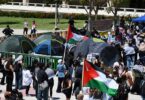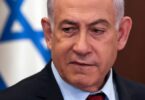Armenak Tokmajyan
On August 24, a group of former rebel fighters left the besieged parts of Daraa city in southern Syria. They departed for Al-Bab in rebel-controlled northern Syria. This was in line with what seems to be a preliminary agreement brokered by Russia and signed by both Damascus and the former rebels. The full extent of the agreement is not yet clear, however, though it is now certain that the regime is insisting on uprooting the resistance networks in the city, composed mainly of former rebel fighters.
The issue of former rebel fighters has long preoccupied the regime. From the start, Damascus was unhappy with an agreement brokered by Russia in 2018 with the rebels. In large part this was because it prevented the regime from dismantling former rebel networks, a situation it has sought to change. One way to achieve this aim was for the regime to gradually encroach on the former rebels’ turf.
The immediate causes of the Daraa crisis go back to June 23, when the Daraa Central Committee, composed of former rebels and the local civilian opposition, rejected a joint proposal by the regime and the Russians that armed elements hand over their light and medium-size weapons in return for the regime’s withdrawal of its militias, which were widely critici-zed for their abuses. When negotiations broke down, the regime besieged Daraa, leaving open only a single road into and out of the ar-ea. About three weeks into the siege, Damascus broug-ht in reinforcements in pre-paration for a military operation.
Increasingly under pressure, the Daraa Central Committee agreed to a deal on July 24. At its core, the agreement permitted the regime to reenter besieged parts of Daraa city with its security forces and the army. It also stipulated a handover of some weapons by the rebels in exchange for the regime withdrawing its local militias and calling off any military escalation.
Yet the agreement fell through. Some accused the Syrian army’s Fourth Armored Division of trying to undermine the deal by bombarding the city. Others reported that the Daraa Central Committee had not been transparent about its agreement with the regime. When some of the rebels discovered that the committee had agreed to greater regime control than it had initially announced, they refused to abide by this. Some even considered it a “betrayal.”
With the breakdown of negotiations, small armed groups attacked and succeeded in taking over several regime checkpoints, capturing dozens of soldiers in the process. This marked a major escalation. The images and videos that circulated online could easily have been mistaken for those taken before 2018. In response to the former reb-els’ actions, the regime ex-panded its bombardment campaign to include cities other than Daraa, most no-tably Yadouda, Jasim, and Tafas, and tightened its bl-ockade. In a clear signal that it would not back do-wn, Damascus called in yet more reinforcements and dispatched Defense Minis-ter Ali Abdullah Ayoub to Daraa to oversee the regime forces’ military readiness.
Interestingly, reports abound that Russia encouraged the regime’s actions, particularly the siege. This was also apparent from the reactions of several Daraa Central Committee members to the situation on the ground. While they had pr-eviously accused Russia of inaction in the face of re-gime violations of the 2018 agreement, this time committee members accused it of outright complicity in the regime’s actions. Inste-ad of serving as guarantor of the 2018 agreement, Russia was now helping the regime against the rebels.
Yet just as a conflagration seemed poised to eru-pt, Russia donned its mediator’s hat once again. At the end of July, the Russians succeeded in brokering an open-ended ceasefire, whi-ch was followed on August 15 by a “road map” that offered a detailed resolution. The road map fulfilled all of the regime’s conditions and gave very little to the opposition. It stipulated the reentry of the regime’s security, military, and civilian institutions, a handover of weapons by the rebels, and an evacuation of those who refused to live under the regime’s writ. This was everything the rebels and the civilian opposition had previously rejected, but were now obliged to accept due to the new balance of forces. From their perspective, the only tangible gain from the agreement was that it averted a major military escalation.
All this raises questions about how Russia views the regime’s increasingly assertive policy in the south. Moscow has generally appeared keen to play the role of mediator, yet seems to have hardened its position on the rebels. Indeed, Russian fluctuation during the Daraa crisis—studied noninterference followed by last-minute mediation—as well as the road map it set out clearly gave the regime the upper hand. Nevertheless, there is a limit to how far Russia will go along with Damascus. The Russians may not be opposed to the regime’s attempts to exercise greater security control in Daraa Governorate. However, they oppose a military escalation that could lead to the collapse of the post-2018 order that Moscow itself put in place, and will step in to avert such an outcome.






